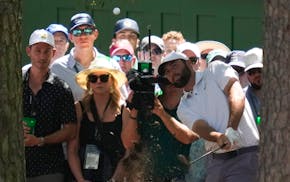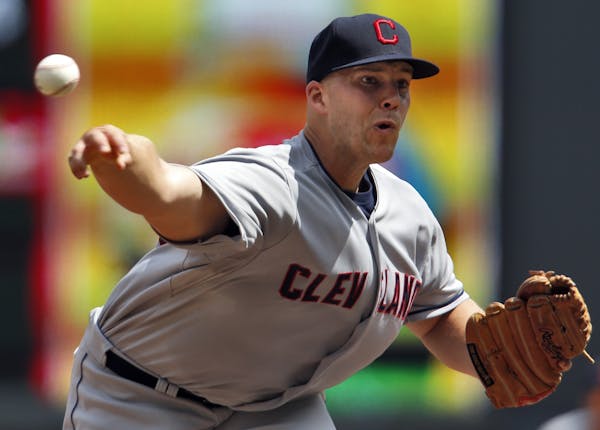The ''quality start'' is a baseball statistic that has been ridiculed. It has taken fire from both traditionalists, who argue that it is a low bar to set for success, and modern thinkers, who argue that it defines mediocrity and is too imprecise.
It was invented in 1985 by baseball writer John Lowe, now of the Detroit Free Press. Lowe observed that if a starting pitcher can last six or more innings and limit the opponent to three or fewer earned runs, he gave his team an excellent chance to win.
The way modern bullpens and modern lineups function, the statistic, despite its detractors, might be the perfect vehicle for quickly assessing individual and team pitching competence.
It certainly works for the Twins.
Sunday, lefthander Scott Diamond continued to fall short of the quality start standard. He imploded in the fifth inning, and wound up allowing six runs and seven hits in 4⅔ innings before being replaced by Anthony Swarzak.
Diamond took the loss as the Twins fell 7-1, breaking a four-game winning streak.
This season, when the Twins pitcher fails to record a quality start, the team is 17-43 (a 28.3 winning percentage).
When the Twins pitcher records a quality start, the team is 24-11 (68.6 winning percentage).
That's 24-11 for a team that lacks power, speed, depth and experience.
This is not a recent development. The Twins' record when they receive a quality start over the past 10 years, a span that includes teams with a wide range of pedigrees and offensive capabilities, is 533-219, for a 70.9 winning percentage.
Every team wants to employ a true ace, but you can win with a group of solid starters.
''You see it every game,'' Twins pitching coach Rick Anderson said ''If we can get through six with a quality start, we're right in it. And when you don't get it, you're in trouble. We always hear from Bert Blyleven, 'You've got to go nine innings!' Hey, we'd love that. But in this day and age, with specialists at the end of the bullpen, if you can get into the seventh and still be close, we've got a chance.''
Diamond never looked sharp Sunday, but the Twins trailed just 3-0 entering the fifth. With two outs and the bases loaded, Michael Brantley tripled, ending Diamond's day and the Twins' chances.
''I was just saying to the other coaches, 'You know, they were scared, and if we had gotten Brantley there, we would have been close and anything could have happened,' '' Anderson said.
In 2002, when the Twins made their deepest run into the playoffs since 1991, their rotation included Brad Radke, Eric Milton, Joe Mays, Rick Reed and Kyle Lohse. None of them were true aces, although Radke had the mentality of one. That team took a 1-games-to-0 lead in the ALCS before the Angels won four in a row.
Even the worst Twins teams have won when their starter gave them a chance. In 2011, when the Twins lost 99 games, they went 49-30 when given a quality start. Last year, when they lost 96 games, the Twins went 39-24 in quality starts.
In 2010, when Johan Santana was a memory, the Twins went 68-19 when they received a quality start.
Internally, the Twins are desperate to develop an ace. They're hoping Alex Meyer, their top pitching prospect, who has been on the disabled list at Class AA because of shoulder soreness, will develop into the closest thing to an ace they've had since they traded Santana.
Aces really aren't necessary, at least for regular-season success. The Twins' two highest victory totals since 1991 both occurred without Santana in the rotation: They won 94 games in 2002 and in 2010.
''We want our guys to give us a chance,'' Anderson said.
Diamond isn't clearing that low bar. He has given them one quality start in his past eight outings. That shouldn't keep him in the big leagues, even on a bad team during a lost season.
Jim Souhan can be heard weekdays at noon and Sundays from 10 to noon on 1500 ESPN. His Twitter name is
@SouhanStrib. jsouhan@startribune.com

Souhan: Why Tiger Woods should keep swinging
Souhan: Scheffler wins Masters again, shows what makes him special
Morikawa falters in final round at Masters

Keeping up with the Joneses who helped design Augusta National's classic back nine


